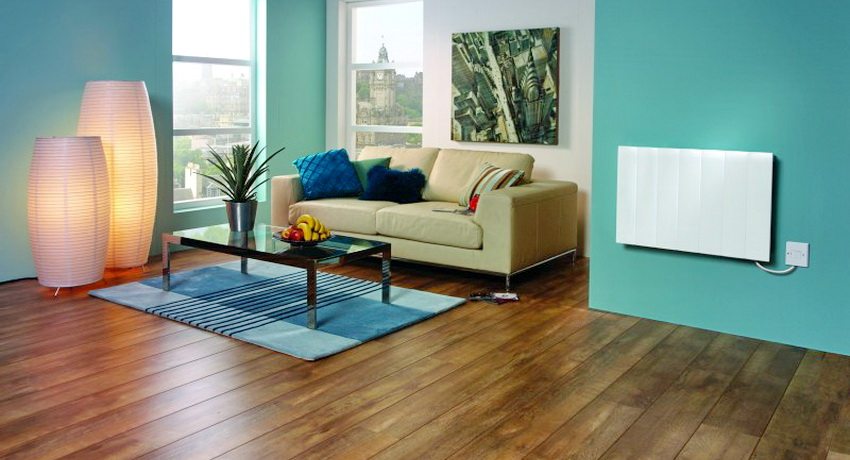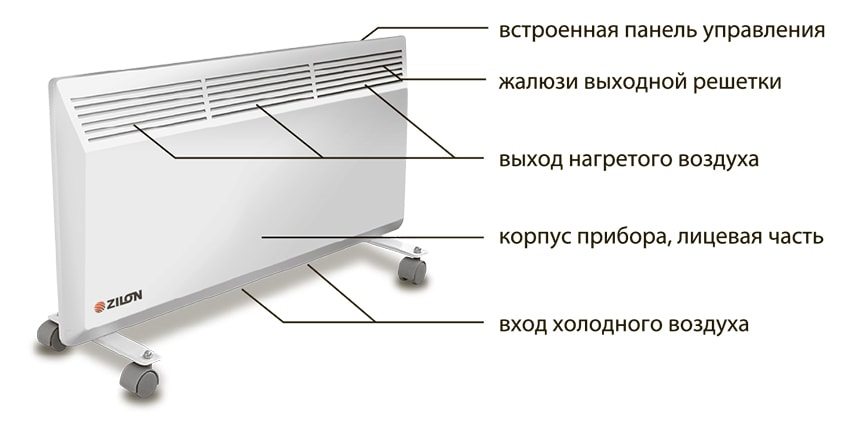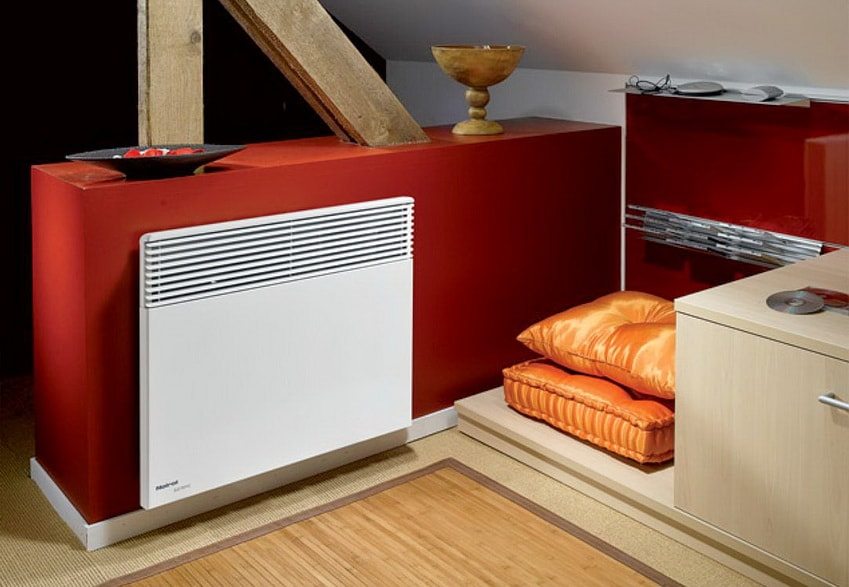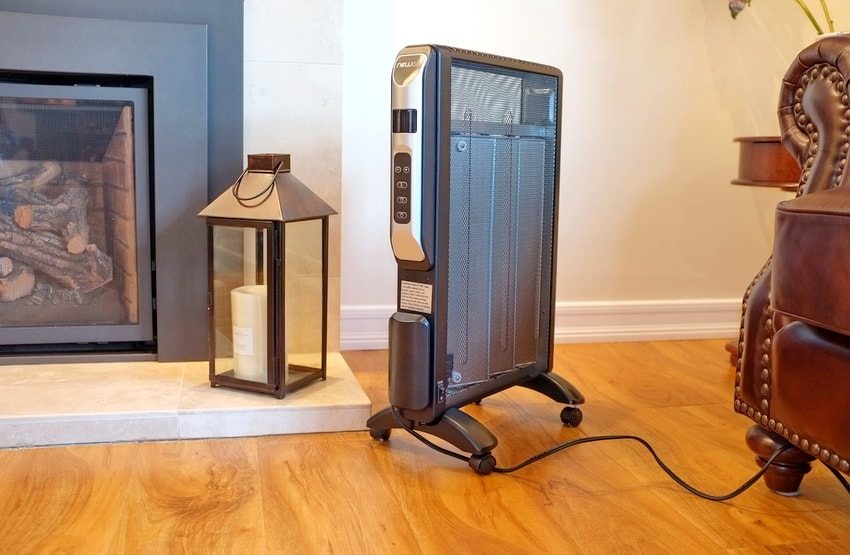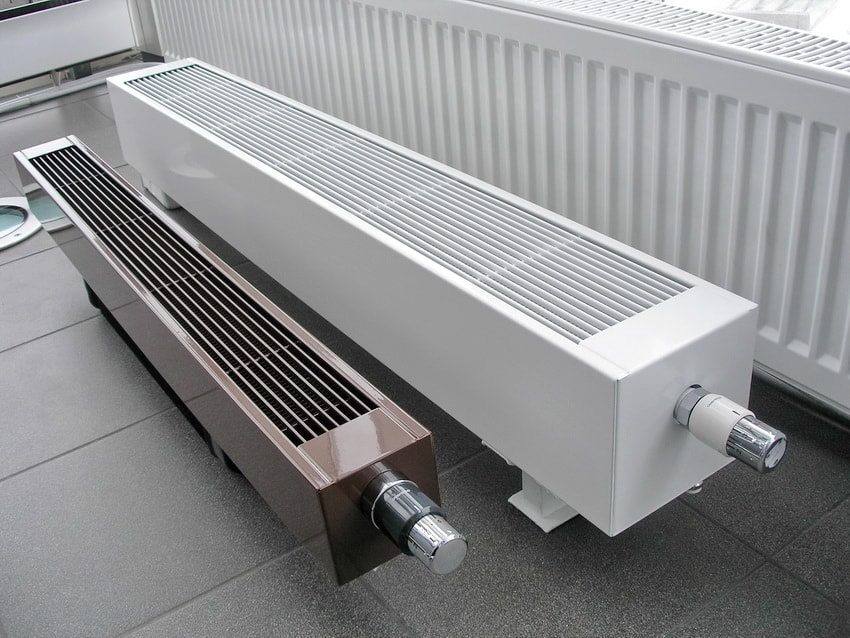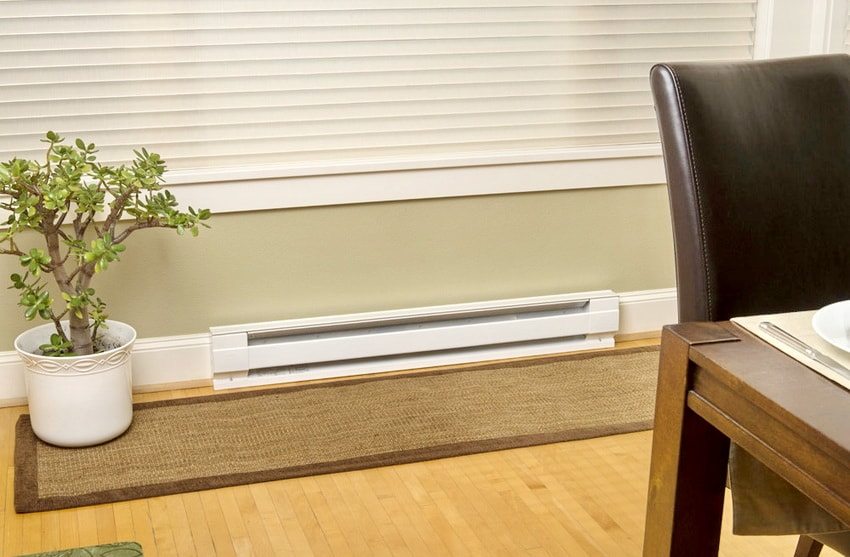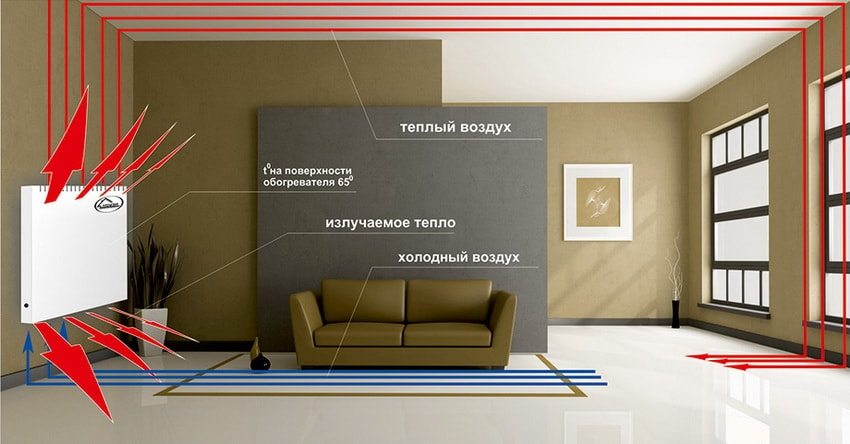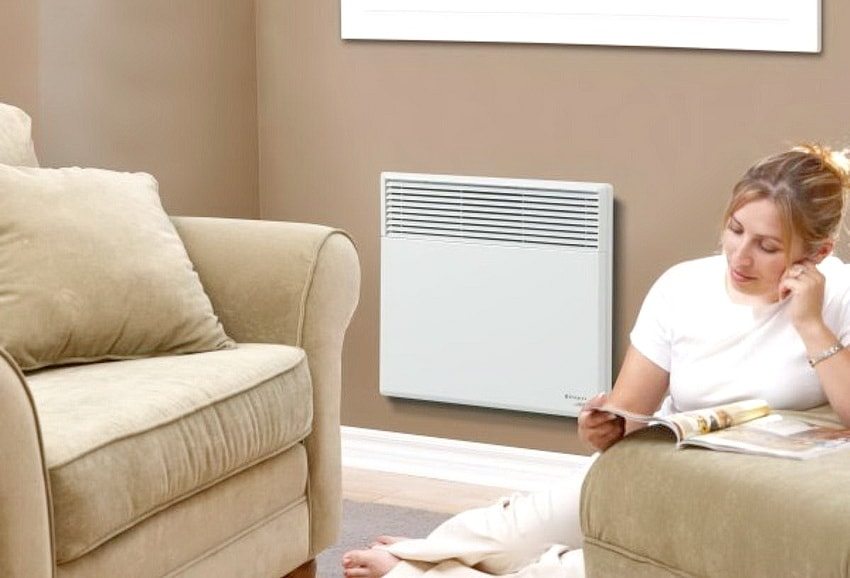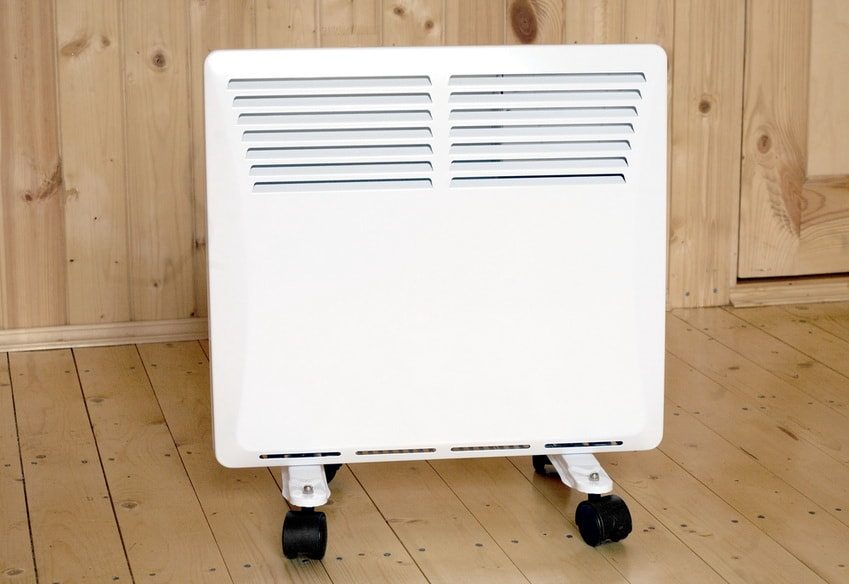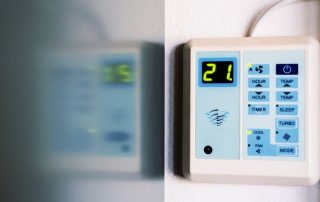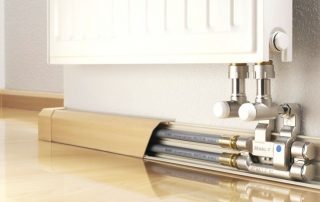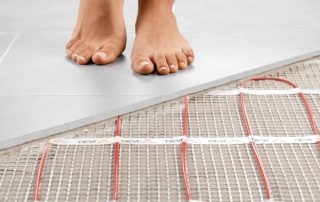In the cold season, you cannot do without additional heating. In this regard, convector-type heaters are increasingly in demand. They are quiet, compact, efficient and will perfectly fit into both home and office interiors. Let's see what are the advantages of such heaters and what characteristics of the device matter in order to choose the option that suits you.
Content [Hide]
- 1 How convector heaters work: design and principles of operation
- 2 Pros and cons of convector heaters
- 3 Comparison of electric wall-mounted convectors with thermostat and oil heaters
- 4 Comparison of micathermic and convector heaters: which is better to choose
- 5 How to buy the best convector heater: types of convectors
- 6 Convector type heaters: types and features
- 7 Comparison of the best convector heaters from different companies
- 8 Prices of electric wall-mounted heating convectors with a thermostat, the cost of floor and universal models
- 9 How to install and safely use Ballu convectors and heaters from other companies
How convector heaters work: design and principles of operation
The principle of operation of a convector heater is simple and is based on the physical properties of air. Air temperature affects its density. So, cold air is heavier, because it accumulates below, closer to the floor. Warm air is lighter, therefore it tends upward towards the ceiling.
In the wall-mounted convector heater, there are special holes at the top and bottom through which air passes. Air enters the unit through the lower slot, the device heats it up, after which warm and, therefore, lighter air comes out through the upper slot and rises to the ceiling.
Thus, the convector is designed to heat and direct the air flow in the room. For this, a heating element is located in its housing. The body of the heater is made of 0.8 mm thick metal to improve the efficiency of operation. The body itself is not wide, which allows the convector not to take up much space in the room. The heater is powered by the mains.
In order for you to be able to influence the degree of warming up the room, a convector-type heater thermostat is provided. To set the temperature regime, just use the knob or button on the external panel of the device.
Pros and cons of convector heaters
Convectors quickly warm up the room. Most of them work silently, and the efficiency of especially efficient models reaches 99%. The warranty period for convectors is 10 years, and often the life of the heater is 20-30 years.Convectors are completely safe to use, and it is easy to find a good price for a convector heater.
It should be borne in mind that the convector is good for heating a small area. Over time, its speed and heating power decrease, and during operation, the heater dries the air and raises fine dust. Also remember that the operation of a convector heater is energy intensive, although some models can reduce electricity consumption and help you save money.
Helpful advice! If you plan to use the convector for the entire cold season, it makes sense to install it on the wall. If you take out the device only during cold snaps, it is better to give preference to a floor convector on wheels.
Comparison of electric wall-mounted convectors with thermostat and oil heaters
The oil heater has long been the most popular type for home heating. Let's see if it is worth switching to convector devices and why.
| Parameter | Oil heater | Convector |
| Economy | Low cost effective. | High consumption of electricity, but in comparison with oil it is 25% more economical. |
| Heating speed | Depends on the model. Long in the case of a conventional model, quickly if the model is equipped with a fan. | Fast warm-up, well suited for small rooms. |
| Ease of use | The average. | It is convenient to use both floor and wall convectors. |
| Safety | Low level of safety, violation of operating rules can lead to an explosion. It is easy to burn yourself if you use a model without a protective cover. | The surface of the device does not heat up to high temperatures, so the convector can be safely left unattended. |
| Durability | Average. | High, is 10-30 years old. |
| Sustainability | Does not affect the humidity level in the room. | Convection causes fine dust to rise. |
Thus, having similar minor disadvantages, convectors are significantly superior to oil heaters in terms of safety, efficiency, convenience and service life. Therefore, in an effort to choose a suitable heater, today they increasingly prefer a better convector heater for the home.
Comparison of micathermic and convector heaters: which is better to choose
The choice between a micathermic heater and a convector depends on the purpose of the device. The main advantages of convection units are the ability to maintain a comfortable temperature throughout the room. This is true when it comes to a residential apartment or office. If you need to heat a large workshop or a spacious production room with drafts, the convector is ineffective, since it will distribute cold air and the action will be exactly the opposite of what was intended. In this case, a micathermic heater is relevant.
Thus, it cannot be said that any of the types of equipment is worse - they have different areas of application. If you choose a heater for your home or office, a convector is the best option.
How to buy the best convector heater: types of convectors
The most popular type of convector is electric, however there are several types of this equipment. Convective infrared is distinguished by the principle of heating: they act on objects - walls, furniture, floors. By maintaining a comfortable temperature and humidity level, the air does not dry out, which creates a healthy microclimate in the room. A significant disadvantage of such a convector is its high cost.
Film wall convectors, consisting of an electrical insulating film and a heating element, can be easily hung on the wall or removed and rolled up. They are very effective, but extremely short-lived.The service life of such a device is up to 3 years.
Gas efficiently warm up the room even more, are simple and safe to operate, environmentally friendly and convenient. However, for the operation of such a convector, a gas source is needed, as well as a connection to a chimney or an exhaust hood, which significantly narrows the scope of this equipment.
The principle of operation of water convectors is based on a central heating system. Such a heater can be floor-standing, wall-mounted, and even built into the floor or walls. Such a convector is safe, convenient and durable, but it is capable of heating an area of up to 10 m², and the warm air from such a device is unevenly distributed. Therefore, most often this type of convector is used in pools and small rooms with a large glazing area.
Helpful advice! To choose the type of convector that suits you without overpayments, determine the scope of the heater. If your goals do not include systematic heating of a large house or heating a swimming pool, it makes no sense to install a gas heater or build in a water front heater - just get an electric one.
Types of heating elements for electric heating convectors with thermostat
The heating element is the most important part of the convector, because it depends on it how effectively your apartment or office will warm up. There are several types of heating elements:
- tape, or needle. Such a heating element is a narrow dielectric plate with nickel-chromium alloy loops on both sides. The main disadvantage of this design is the fragility of these loops. Because of the ease of damage, tape heating elements are hardly used by modern manufacturers. In addition, such a design does not provide for the presence of ribs, as a result, the convector body first heats up, followed by the movement of warm air. This principle of warming up is not fast and efficient;
- tubular heating element - heating element. This is the most popular type of convector heater for home and office. Its design is simple: there are aluminum fins along the entire length of the heater tube. The heat transfer of the device is directly proportional to the size and frequency of the ribs;
| Advantages of heating elements | Disadvantages of heating elements |
| A much lower temperature of the tube in comparison with the nichrome thread inside it. | The difference in thermal expansion between the aluminum plates and the steel tube causes a slight crackle accompanying the operation of the device. |
| Long service life. Uninterrupted operation in rooms with high humidity - in this case, the IP24 protection class is relevant. | As the device operates, the space between the fins and the steel tube increases, which leads to heat loss. |
- monolithic heating element. At the core, it is similar to a heating element: a nichrome thread is located in a cast aluminum case, and the fins on the case provide heat transfer. But as an insulator, a dielectric backfill is used here. Thus, the difference in temperature expansion, leading to heat loss in the heating element, is leveled. As a result, the efficiency of the monolithic heating element is maximized. The body of the device of such a convector almost does not heat up, and the operation is quiet. The principle of operation of the unit is as follows: the hollow body acts as a wind tunnel, as the air heats up, thrust is created in it. As a result, cold air continuously enters the switched on convector, transforms into hot air and flows upward, and all the air in the room is systematically warmed up.
Helpful advice! When buying a wall-mounted convector heater, be sure to ask about the type of its heating element. So you can predict in advance the effectiveness of his work and possible problems.
Convector type heaters: types and features
Electric convector heaters are available floor, wall and baseboard. Floor and wall convectors are usually up to 45 cm high, but baseboard convectors are usually no higher than 25 cm, but much longer - the length of such a convector can reach 2.5 m.
Install electric convector-type heaters on the floor or wall. The choice of its type depends on where you want to place the device. If you want to put a heater under the window opening, take a closer look at the baseboard convectors. They can be moved from place to place using a handle and wheels. Because of the length, frequent movement of the baseboard convector is not always convenient, but you can be sure that the air in the lower part of the room will be well warmed up, and this is especially true when sitting at a computer and a cold parquet floor.
If you want the unit not to take up space in the room, convector-type wall heaters are suitable for you. Such a heater is mounted on the wall using special brackets, is compact and fits seamlessly into a modern interior.
What to look for when buying an electric wall-mounted convector with a thermostat
A good convector will serve you for many years, so you should take your purchase seriously and choose a quality appliance. The following characteristics matter:
- power. The choice of this parameter is related to the size of the room. For example, your room area is 19 m², ceiling height is 2.7 m. To heat 1 m³ of the room, you need 25 watts of power. Thus, we multiply both numbers by 25 and we get 1285.5 watts. When rounded up, we get one and a half kilowatts - this is the power of the heater we need;
Helpful advice! The calculation of 25 W of power for heating 1 m³ of area is correct if you intend to use the convector to heat the house in the off-season, while the heating has already been turned off or not turned on yet. If there is no heating in the room at all, count on the basis of 40 W of power per 1 m³.
- heating element and its type. The cast monolithic heater functions the longest and most efficiently;
- dimensions. Altitude affects the speed of air movement. As a result, a small convector 60 cm high will warm up the room much faster than a tall one. If you have chosen a floor or baseboard heater, pay attention to its weight - after all, you may want to rearrange it from place to place, or one day the convector heater will need to be repaired and it will be necessary to carry it to the master;
- safety in use. It is clear that everyone strives to choose the most secure device. In the case of a convector, you should only worry about the absence of sharp corners in the unit. After all, one of the main advantages of convectors in the question of which is better, heaters or convector systems, is that the convector is devoid of the risk of ignition. It will not burn the skin if accidentally touched, since it is heated to a maximum of 60 ° C, does not require grounding and copes with voltage surges;
- additional options. When buying a convector-type heater with useful capabilities, in addition to directly maintaining the desired temperature in the room, you will be able to control its operating mode.
| Function | How to use |
| Temperature regulator | You can always keep your room at a comfortable temperature. In cold weather, you can unscrew the regulator to the maximum, and in a thaw, reduce the temperature. |
| Thermostat | Allows you to constantly maintain a given comfortable temperature in the room. |
| Timer | Allows you to turn on the heater and set the time for its automatic shutdown. Thus, you can put the convector on heating and go to bed. |
| Ionizer | Absorbs dust and saturates the air with negative ions.The room climate becomes healthier, and you sleep better and be more productive. |
| Remote control | Allows you to turn on the heater from a distance. |
| On timer | Allows you to set in advance the time to turn on the device. Especially true on cold winter mornings, when you want to crawl out from under the blanket into an already heated room. |
| Roll-over protection | It will help to avoid troubles when there are small children and pets in the house. |
Helpful advice! If people with respiratory diseases or allergies live or work in the room where the convector will be installed, take care of choosing a heater with a humidification function and air ionization.
Comparison of the best convector heaters from different companies
The products of each manufacturer have their own characteristics and the best lines.
- The Norwegian company Nobo is especially famous for the Oslo convector series. A feature of these devices is the ability to accurately set the temperature regime and efficient operation with minimal energy consumption. This way you can save on electricity costs.
- A feature of the heaters of the French company Applimo is the use of a Schwarz CV silumin heating element. As a result, the efficiency of the device is very high, moreover, you can set the temperature mode with an accuracy of 0.5 ° C.
- The European international company Neoclima makes heaters of the Dolce and Comfort series, designed specifically for rooms less than 20 m². The temperature regime in them is regulated by automatic equipment, ensuring maximum safety and comfortable conditions.
- No wonder the Ballu convector has earned customer reviews and recognition in the international market. This Hong Kong-based company is known for its high-tech thermostats, and their products are also highly safe. The heating element of convector heaters is made of aluminum, and the X-shape increases the working area and allows you to instantly warm up the room. Also, the devices of this company are distinguished by their durability.
- Not the last place in the rating of convector heaters is occupied by the products of the Czech company Saturn. Their advantage is in diversity, because the range of heaters includes about twenty options.
- Convector heaters Electrolux are distinguished by their quiet operation and versatility: many models can be placed both on the floor and mounted on the wall.
Helpful advice! Before buying a model you like, read reviews about the selected convector heater. For example, in a store it is often said that a particular model does not collect dust, although this is physically impossible - due to air circulation, dust inevitably gets into any convector. Thus, it is better to follow not advertising, but the experience of people who have experienced all the characteristics of the device in practice.
Prices of electric wall-mounted heating convectors with a thermostat, the cost of floor and universal models
The cost of a heater depends on its characteristics. The wall-mounted flexible convector will be the most economical. As a rule, the price is directly proportional to the power of the device, although each company has economy options.
For example, an average Nobo model will cost twice as much as a similar Elektrolux model, while an economy class Nobo heater may cost less than the products of the democratic Watt WCH.
The price of the best convector heaters using infrared radiation is the highest. They do not dry the air and work on the principle of heating objects. Slightly cheaper are gas heaters, and even more economical are water heaters, the price of which is still several times higher than the cost of electric ones.
Be prepared for the fact that a truly effective and high-quality device will not be cheap. However, it will last for decades, so it makes sense to overpay for operational reliability and efficient room heating.
How to install and safely use Ballu convectors and heaters from other companies
After purchase, the convector must be fixed. In the case of wall-mounted models, first the frame of the device is attached to the wall, but if the convector is floor-standing, it is necessary to fix the legs with wheels on the body. Each model comes with instructions for installing the device.
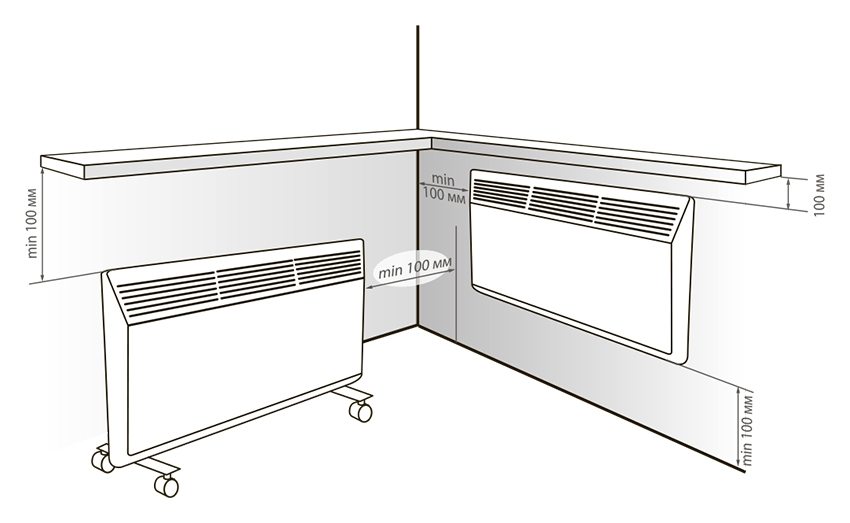
Recommended standards for placing floor and wall structures heaters
Please note that the lower edge of the convector body must not be lower than 15 cm. Do not bring the device closer to the wall or any objects by more than 25 cm. The distance between the upper edge of the convector and any objects should not exceed 45 cm. fire safety system, and if the upper slot is accidentally closed by something, the automation will work and the device will simply turn off. Therefore, you cannot dry things on heaters, cover it with something or put a high convector under the window.
Helpful advice! From time to time, the accumulated dust should also be removed from the heating element of the heater. To do this, use a vacuum cleaner with a narrow nozzle.
In care, ceramic convector heaters and convectors of other types are unpretentious. From time to time, wipe the outer panels of the unplugged appliance with a damp cloth. Before starting cleaning, make sure that the convector body has time to cool down.
